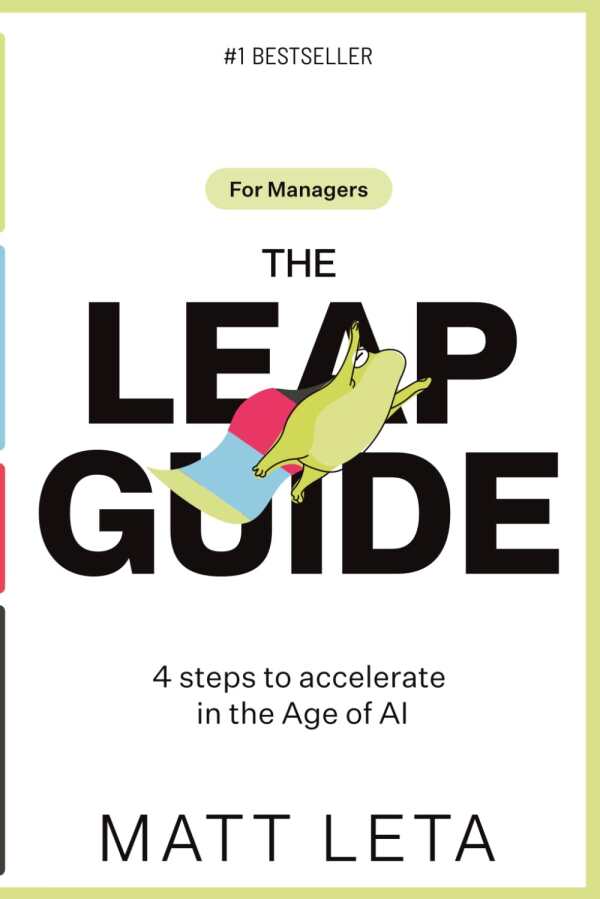
The Leap Guide
4 Steps to Accelerate Innovation in the Age of AI
A leadership guide to adjusting to the changing business world, The Leap Guide is rigorous in showing how to match the dynamic pace of innovation.
Matt Leta’s forward-thinking business book The Leap Guide is about future proofing businesses against disruptive industry changes.
Organized as a reference text, the book introduces its LEAP system (Locate, Evaluate, Action Plan, and Progress) for adapting to business trends like artificial intelligence and net-zero targets. The book breaks down every component of the system in full before detailing how to use LEAP, as where it outlines the roles of leaders and innovation supercycles. Throughout, the system’s steps are applied to subjects including innovation, people, and culture; common pitfalls are covered alongside actionable advice on subjects including workforce buy-in and what types of employees to hire to get the most harmony and productivity out of a team.
Noting that more than one hundred innovation books are published each month, this book seeks to distinguish itself via its examples and authoritative references. For instance, it chronicles a social media experiment to launch a business while partnering with AI. It also reinforces its points with concrete examples, as of companies reinventing themselves (Nokia was once a paper mill, Samsung a grocery, and Shell a seller of decorative seashells). However, some of its examples are too familiar to be compelling, as when it explains Apple’s successes in designing products and states that innovation disrupted the existing business models of taxis and video stores.
Insistent on keeping “swanky verbiage and acronyms to a minimum,” the book uses no self-coined phrases or acronyms other than LEAP. Its prose is plain and clear, distilling complex ideas well, as when it suggests that “demanding for a big company to ‘be like Uber’ is no more realistic than commanding your dog to speak French,” or when it says that an effective leader should be more of a shipbuilder than a captain. At points, too much space is devoted to unpacking the semantics of terms like “innovation” and “transformation,” though.
The book makes heavy use of graphics and templates to copy, like for an opportunities database and for cycles that yield quick wins. Some of the line charts are too crowded with data points, though, and other graphics add little, such as the book’s word clouds and visual depictions of what leapfrogging technologies entails and what continuous change looks like. In addition, there are frequent and off-putting instances of self-promotion, with Leta touting his other books and soliciting positive Amazon reviews, though the directions to his website for free supplementary tools are helpful.
An encouraging leadership guide, The Leap Guide is about preparing businesses for the future.
Reviewed by
Joseph S. Pete
Disclosure: This article is not an endorsement, but a review. The publisher of this book provided free copies of the book and paid a small fee to have their book reviewed by a professional reviewer. Foreword Reviews and Clarion Reviews make no guarantee that the publisher will receive a positive review. Foreword Magazine, Inc. is disclosing this in accordance with the Federal Trade Commission’s 16 CFR, Part 255.
